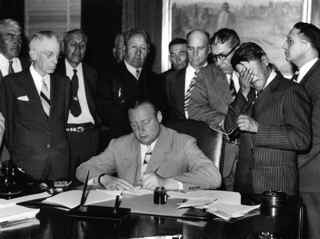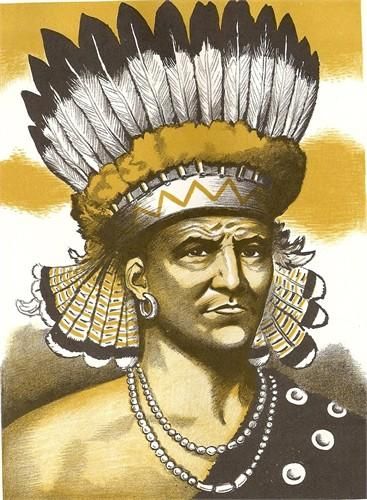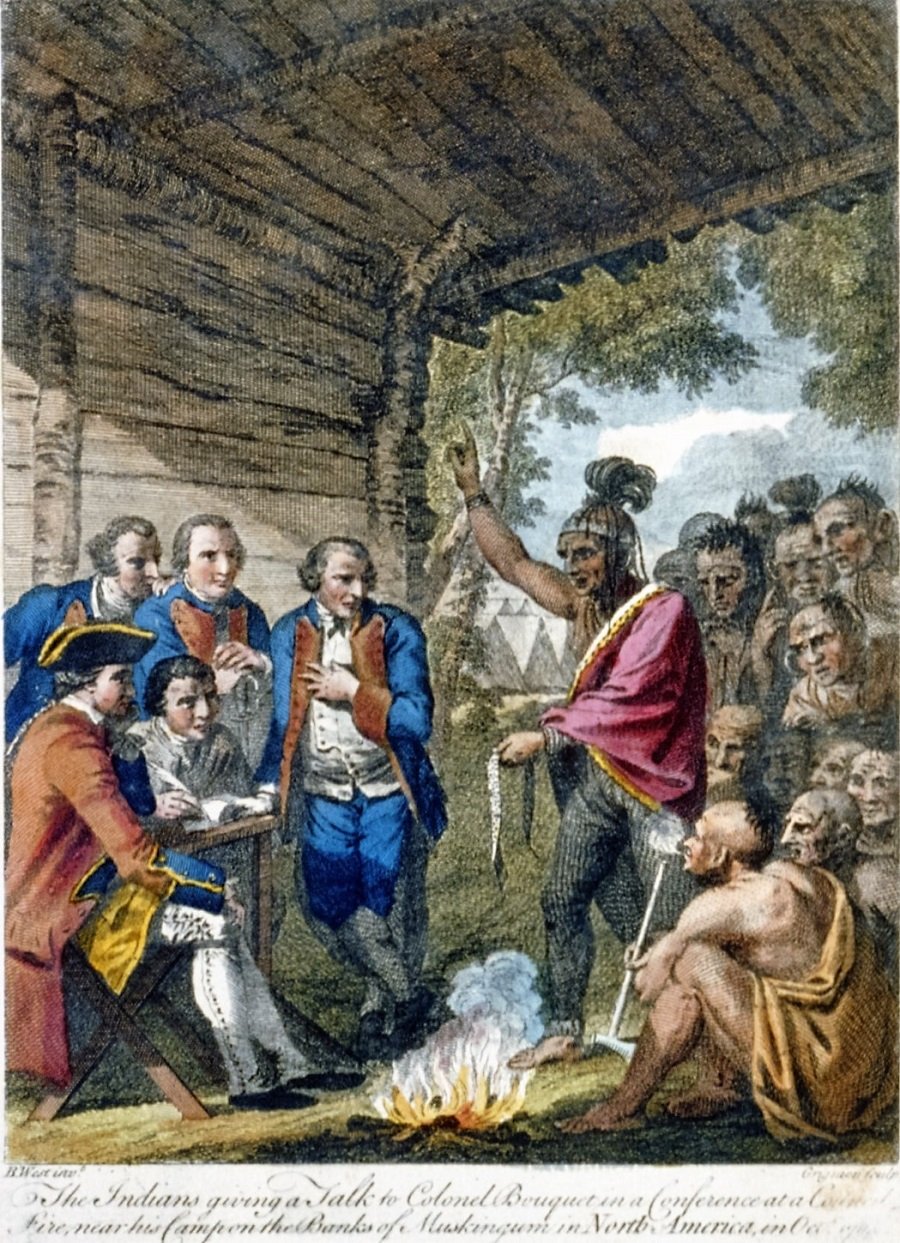The Termination Era

In 1945 Commissioner of Indian Affairs John Collier, who had emphasized cultural pluralism for American Indians, was forced to resign by congressional opponents who sought a return to the policies of assimilation. The new approach was that of termination. The idea was to force individual Indians to assimilate into mainstream, English-speaking, Christian American society by getting rid of Indian reservations, by terminating all treaty obligations to Indian nations, and by terminating all government programs intended to aid Indians.
In this approach, Indian cultures were considered to be irrelevant at best and anti-American at worst. With little understanding of the historical, cultural, and legal basis of reservations, the proponents of termination viewed reservations as a form of segregation which retarded the assimilation of individual Indians.
Termination was intended to dismantle the reservation system, to transfer the natural resource wealth of the reservations to private non-Indian corporations, and to place Indians at the mercy of local state and county governments. The Terminationists emphasized the need to get the federal government “out of the Indian business.”
Former Senator Ben Nighthorse Campbell wrote:
“In Washington’s infinite wisdom, it was decided that tribes should no longer be tribes, never mind that they had been tribes for thousands of years.”
The Nez Perce Tribe puts it this way:
“This era marked another abrupt change in what can only be described as a schizophrenic federal Indian policy.”
The inspiration for the termination argument stemmed in part from a sense of innate superiority by non-Indians and in part it involved money. It would be cheaper for the United States, which was now heavily committed to rebuilding the war-torn countries and economies of their former enemies, to do away with treaty rights, tribal governments, and support for Indian programs. Under termination reservation lands could be sold and would be subject to local property taxes, a concept strongly supported by local governments which had traditionally been anti-Indian.
Following World War II, the United States underwent a massive housing boom. This meant that there was an increased demand for natural resources, particularly timber. Many of the tribes which were initially selected for termination had valuable timber and mineral resources. With termination, these resources could be privatized-that is, transferred from the public domain to the ownership of large corporations-and then developed.
Termination was set against the backdrop of the Cold War in which the United States saw itself as being involved in a deadly struggle against Communism to maintain its way of life. In the anti-Communist hysteria of the time, many people viewed Indians as aliens and viewed tribal ownership of land as a form of Communism and therefore un-American. To be Indian with a distinct history and culture was viewed as anti-American.
Another aspect of termination was a political philosophy of states’ rights: often used as a shorthand designation giving tacit approval to racial discrimination. Returning to the anti-Indian racism of the nineteenth century, Indians would have little support from local governments.
The cry used by those who wished to return to assimilation and to terminate the relationship between the tribes and the federal government was “Free the Indian.” In order to free Indians from federal control, it was first necessary to destroy the tribal governments.
While the mood of the post-war Congresses was clearly in favor of assimilation and termination, the first strong step toward assimilation as the official policy of the United States came in 1952 with House Joint Resolution 698. This resolution called for an examination into the conduct of Indian affairs and a list of tribes which were sufficiently prepared for termination. Tribes subject to termination were supposed to have attained a significant degree of acculturation, to be economically self-supporting, and to be willing to accept the termination of government services. In response to the resolution, the Bureau of Indian Affairs (BIA) developed an extensive questionnaire for BIA officials to use in evaluating each tribe. The resulting report reflected the judgment of reservation superintendents and BIA staff.
The following year, House Concurrent Resolution 108 called for the formal termination of Indian tribes. The writers of the resolution apparently were unaware that Indians are citizens (Congress had granted all Indians full citizenship 1924 and again in 1940) and that they were not “wards of the state”. As usual, Indians were not consulted. The Resolution specifically expressed the intent of Congress as supporting unilateral withdrawal from its treaty obligations to Native Americans as soon as possible.
Members of Congress were particularly interested in opening up Indian lands for sale and taxation, particularly if those lands contained valuable natural resources such as timber. The Klamath and the Menominee, whose reservations included valuable timberlands, were specifically singled out for early termination.
In response to this resolution, the National Congress of American Indians (NCAI) held an emergency meeting in Washington, D.C. in an attempt to block the legislation. According to NCAI President Joe Garry (Coeur d’Alene):
“Most of the pending legislation, if passed, would result in the end of our last holdings on this continent and destroy our dignity and distinction as the first inhabitants of this rich land.”
Apache tribal leader Clarence Wesley told the NCAI delegates:
“Either the United States government will recognize its treaty and statute obligations to the Indians . . . or we will continue down the bitter road toward complete destruction.”
Between 1945 and 1960 Congress terminated more than one hundred tribes and small bands. This action left these groups with the same legal status as the unrecognized tribes. Through the termination process, about 11,500 Indians lost their legal status as Indians, and nearly 1.4 million acres of land lost its status as trust land. None of the tribes which were terminated improved economically: in most cases the impact of termination was to increase poverty. On the other hand, many non-Indians became wealthy through this process and many corporations gained a great deal of wealth.
Former Commissioner of Indian Affairs Philleo Nash would later write:
“The termination era may appear as a unique event, a failed experiment that was soon corrected. But termination was actually an expression of the national will that the ultimate goal of government policy toward Indians was ‘assimilation.’”
In 1970, President Richard Nixon asked Congress to pass a resolution repudiating termination. He told Congress:
“Because termination is morally and legally unacceptable, because it produces bad practical results, and because the mere threat of termination tends to discourage greater self-sufficiency among Indian groups, I am asking the Congress to pass a new Concurrent Resolution which would expressly renounce, repudiate and repeal the termination policy as expressed in House Concurrent Resolution 108 of the 83rd Congress.”
Since the end of termination, 78 of the 113 terminated tribes have been recognized again by the United States government and 35 now have casinos; 24 of these tribes are now considered extinct; 10 have state recognition but not federal recognition; and 31 are landless.



